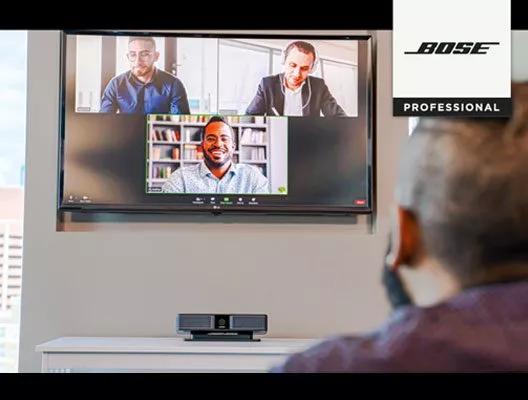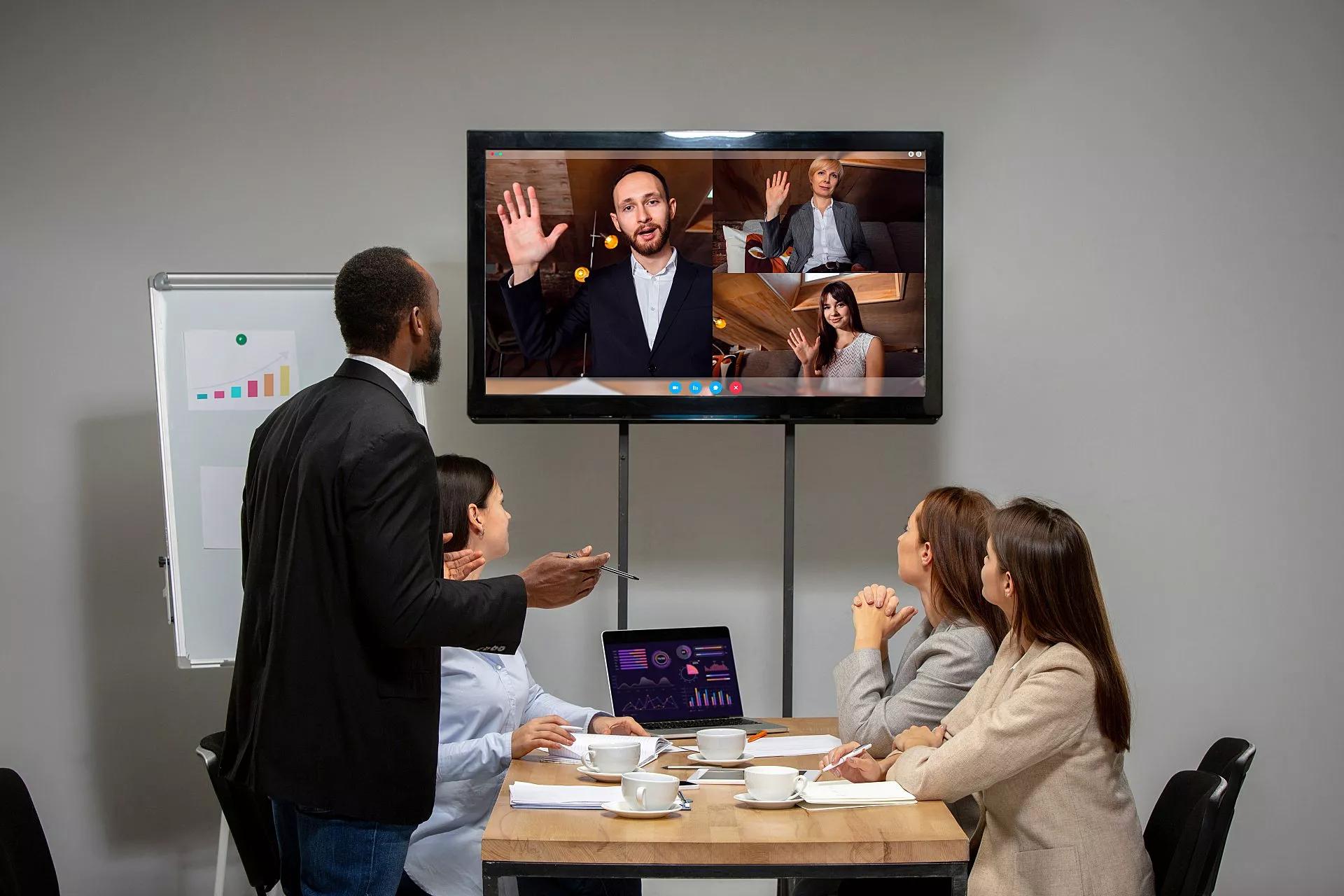
Hybrid work is essential to business productivity. As an IT manager, you can make hybrid work succeed by:
- Making video collaboration as flexible as possible. Portable and huddle area meeting solutions maximize space.
- Delivering high quality conference room video and audio. When everyone can see and hear what’s going on, meetings are more successful.
Selecting the right remote technologies for the transformed office space has become a make-or-break task for IT managers in the shift to the hybrid workplace.
With how work gets done changing every day, tools for remote work in office and meeting areas have to be flexible, intuitive to use, able to handle increased use, and capable of communicating with the other devices using a variety of platforms. IT managers recognize how these important decisions impact companies and organizations that want to enable workers to adapt and perform at the highest level as the workplace continues to evolve.
The choices are overwhelming when deciding which remote technologies will best serve the transition to hybrid work. In addition to budget concerns, IT managers must consider how workplace productivity will be impacted if the technology doesn’t perform well — and how workers’ collaboration and innovation will suffer as a result.
To help leaders who see the importance of having great remote technologies in place in the age of hybrid work, we looked at five key areas IT managers should address for successful work performance.

Flexibility in remote technologies is crucial for the success of organizations in hybrid work environments.
1. Quality Individual Workspace Audio and Video Technology
Video endpoints are more important than ever in the hybrid workplace as a result of ongoing social distancing. It’s likely that even those who have returned to the office will attend more virtual meetings, whether with colleagues who continue working remotely or with others who are in the office but in separate workspaces. On top of a video-first strategy, endpoints need to offer top-level installed audio output and microphones, allowing teams to see and hear everything that’s happening whether they are in person or remote. This includes the ability to clearly see people moving about the room or making notations on a whiteboard for improved discussion and interaction. Those robust feature sets and large screens eliminate the frustration that comes from feeling disconnected or disengaged in a remote environment. Instead, teams will be able to collaborate naturally and bring their work together no matter where they are located.
2. Flexibility with Workspaces in Transition
On-the-go remote video screens on wheels serve as versatile, easy-to-maneuver devices that offer a high level of flexibility. With collaboration in mind, the technology gives teams the option to make any space in an office, workshop, or factory area usable for meetings. It’s important to keep in mind the location that’s being used and how other factors, such as how the size of the space and sound may impact the meeting. As office space usage changes and shrinks rapidly with hybrid work, portable meeting boards offer a versatile solution to overbooked meeting rooms or lack of space dedicated to collaboration or huddle areas.
3. Effective Conference Room Audio and Video
Studies show that remote video is a far more effective means of communication than telephone calls and even some in-person meetings. With the onset of hybrid work dramatically increasing the number of those video sessions, it’s crucial to get the most out of huddle areas and medium-sized meeting rooms. Audio and video hardware need to deliver the best experience to all participants — in person and remote — so no one is left feeling like they missed key material or failed to connect with an important business contact. Easy installation, quality cameras, speakers and microphones, along with quick-connect options like single-cable connectivity are some must-have features needed to make meetings successful.
4. Improved Use of Meeting and Huddle Areas
Prior to the pandemic, it was easier to overlook the importance of how efficiently businesses use meeting areas. Today, having functional spaces to support in-person and remote meetings is essential to business. With those areas becoming high-capital cost investments with the integration of remote conferencing technology, the expense of underused or misallocated rooms adds up quickly. Room management tools and the ability to analyze data offer solutions to that growing issue. Room control panels located outside rooms allow for online and in-person booking, rescheduling, and coordination among employees to ensure they can maximize the use of the space. And the data gathered around room usage helps detect where improvements can be made based on employee behaviors, such as audio-only meetings in a videoconferencing room or ‘ghost bookings’ where the room is shown as unavailable but is never used. Identifying these patterns will ensure continued improvement for both employee collaboration and the technology investment made.
5. Proper Communication and Collaboration Tools
The pandemic saw an explosion of options for how businesses utilize remote technology hardware to continue to work and collaborate. Zoom grew so popular that it became a verb, Microsoft used Teams to solidify its place as the all-around leader in productivity solutions, and a host of others are innovating around video and audio meetings to provide maximum flexibility and a rich complement of features. While the era may have passed when free trials were abundant to attract new customers, it’s important for companies and organizations to enable multiple options if at all possible. That variety will enable workers to find the solution that fits them best for effective communication and work.
There is no doubt that IT teams and leadership have more demands being placed on them than ever before. These subjects represent opportunity-rich areas to make a difference and gain efficiency by using remote technologies effectively to maximize the benefits of the hybrid workplace.
